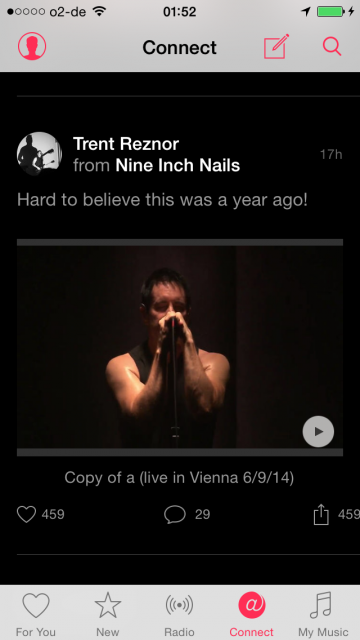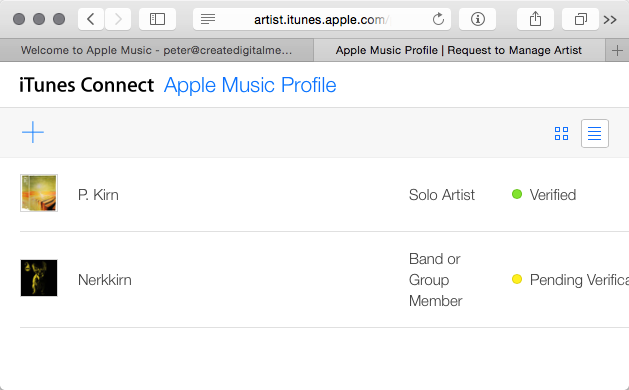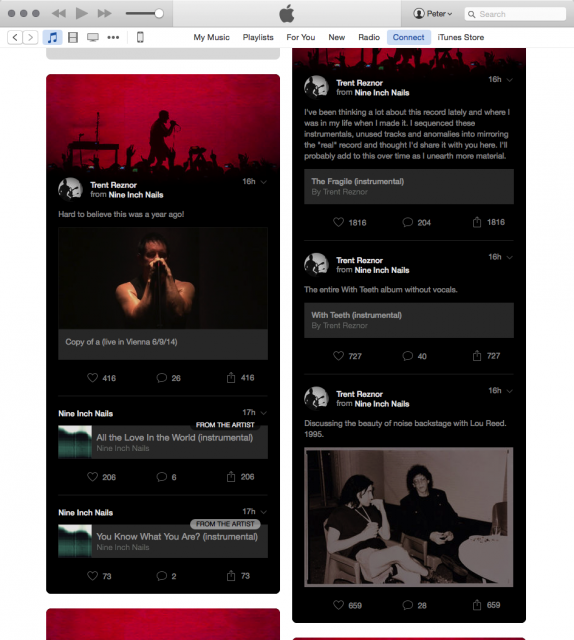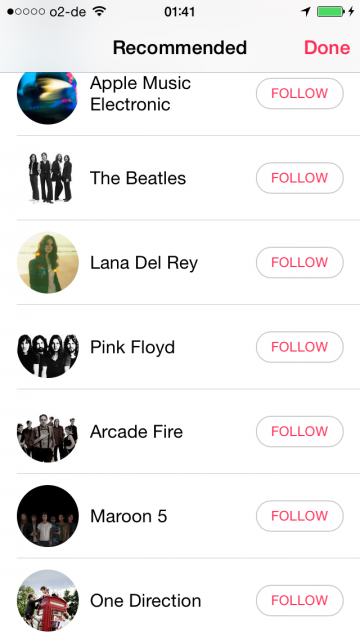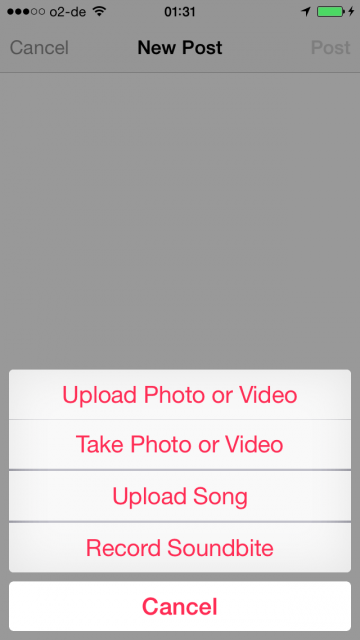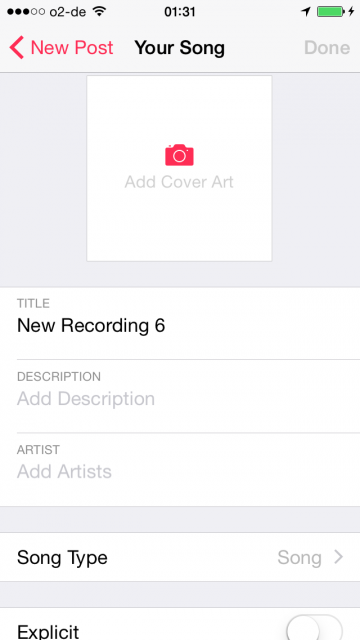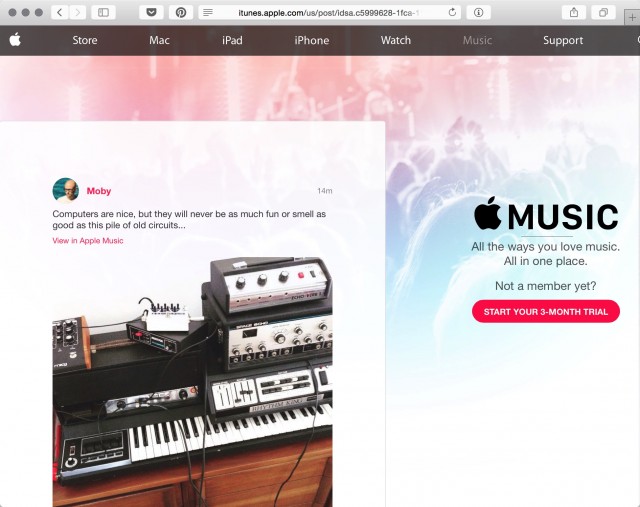Apple Music, the company’s streaming / social / radio service, rolls out today. So you’ll see plenty of people talking about how it looks to listeners.
But how does it look to artists?
If you followed my previous advice about signing up for “Music for Artists” via Apple Connect, you may already be having a look. But here’s the big-picture overview.
Connect – Where?
Connect involves a few ingredients:
1. A Web-administered identity, connected to your iTunes account
2. A (read-only) presence with content in iTunes on desktop
3. The ability to both read and add content from the Apple Music app on iOS
First, you’ll need to verify an artist profile and wait for approval. See, previously:
Here’s How To Get Yourself on Apple Music – Even Unsigned
Once that’s done, you can see your account in iTunes Connect. Developers for iOS and the OS X App Store will find this familiar: there’s a Web interface for administering your identity, with the same name. It’s also related to a similar ‘iTunes Connect’ feature that for years has allowed labels and major artists to upload content to iTunes, though here we’re talking about functionality and content that appears in a new, unrelated section. From this point on, “Connect” will refer to the fledgling social media-style channel that appears in the new Apple Music.
And from there, you can … do nothing, actually. You can see if an account is verified, but that’s it. (You’ll see in my screenshot here Apple approved me as a soloist but appears to be waiting on my label for the duo I’m part of.)
No, to actually use “Music for Artists,” you have to switch to the app. So, whereas I can add content to Facebook and SoundCloud from desktop and mobile apps but also from the Web interface, Apple is apps-or-nothing.
To get the Apple Music app, you’ll need to update your software. On OS X, that’s easy – you can just update iTunes, without a restart. On iOS, you’ll need to update the entire operating system to iOS 8.4. (Android support is somewhere in the future.)
Let’s start at what you see as a viewer.
The Trent Reznor Social Network
Connect is based on “following” artists. By default, this is artists you’ve already got in your iTunes Library. On desktop iTunes, your choices are pretty limited. So, in my case, I was greeted with what appeared to be Instagram if Instagram were entirely about Trent Reznor. (Not a terrible thing, but there you are.)
On mobile, you can choose to switch on or off the “automatic” follow feature (based on adding artists to your library). You can also drill down and follow or unfollow certain artists. You can also choose to “find more” artists, though that leads to a somewhat alarming selection of “recommended” artists that seems to be the same for everyone. (That or else I’ve made some horrible karmic error that makes Apple think I like One Direction.)
You can still find artists manually, via a search feature. But there’s no Web interface, and that means no Facebook integration and the like.
You can “heart” content, comment, or share (via Apple’s standard sharing facility). Comments are public, but there’s a ‘report concern’ link (if someone starts saying something unseemly to Trent, which for me hadn’t happened yet).
And then you scroll forever. On iTunes on desktop, content lives in a fixed layout that doesn’t adapt to the width of your screen.
Adding Connect Content
You can only add content – for now – via the iOS app, not even via the new iTunes on Mac.
The actual content is associated with your profile (or one of your profiles). It includes:
1. Message (Text, link)
2. Uploaded content (Video, photo, a song from your music library, or a Soundbite recorded from the mic)
3. Apple Music Library content
The library of Apple Music is the one way to go beyond what you already own.
The interface is ridiculously limited. Basically, you get access to your iTunes Music library on your device, and photos and video stored in your library, plus the ability to make these Soundbites. That’s it. I’m hoping that you’ll be able to share via other facilities, but for now, you can’t. So, for instance, there’s no obvious way to upload a snippet from a music creation app to the app – other than go through the library, anyway.
If you do upload music from your library, you’re presented with a metadata editing interface.
But for each of these methods, all content is uploaded from iOS only. Got some video shot on a DSLR? You have to first load that onto an iOS device before you can upload. Got a track you finished on your computer? Ditto.
This restriction is annoying enough on a service like Instagram. But at least Instagram has “instant” in the name, and serves the purpose of making photos immediate. Connect is geared specifically for pro creators, and there’s no clear reason it’s mobile-linked. Digging through Trent Reznor and Nine Inch Nails, in fact, most stuff seemed to be archival.
One exception: GarageBand lets you export tracks directly to the service, from both the latest iOS and OS X versions. But, again, that means extra steps for a lot of content makers – adding friction to a service we’re not using yet. And even if we’re talking your iPad alone, most apps make it easier to upload to SoundCloud than it is right now to upload to Connect.
You also can only upload one type of content at a time. So, for instance, say you’re on tour. You snap a photo with your iPhone and want to record a little soundbite. You can’t actually put those together in one post; you have to upload each separately.
How Connect Connects
So, it’s a chore to upload content – where can it be seen once it’s there?
Once you have that material, it can show up in a few different places.
1. It’ll appear in Apple Music to anyone who’s a “fan” – they’ve added your music to their library, they’ve bought your music on iTunes, they follow you directly via Connect, or they visit your artist page.
2. You can attach it to an already-existing album – basically, making “easter eggs” for your music on iTunes.
3. You can make an embeddable player at http://linkmaker.itunes.apple.com/
4. There is a Web page on Apple.com associated with the content, with a link.
5. A basic sharing function will copy that link directly or share it on Facebook or Twitter (though only once it’s posted).
And this experience is…
Well, absolutely horrible, unforgivably horrible, like no one had ever seen the Internet. SoundCloud alone can in a couple of clicks make an embeddable player and share audio to Twitter, Facebook, Tumblr, just to name a few. With a couple more clicks, it can keep up with my concert appearances from another service.
Just read the above a couple of times if it hasn’t sunk in:
You can only upload to it from Apple Music on iOS – even the latest OS X software doesn’t work. You can create embeddable content, but using a confusing, separate tool that (at the moment) only supports album content. And then once uploaded, it’s needlessly hard to share with other services.
Correction: It is available online. For instance, here’s a link that refers to a picture Moby just posted of some gear:
https://itunes.apple.com/us/post/idsa.c5999628-1fca-11e5-94d3-dd2e912b9efb
And that shows up on Apple’s site, though annoyingly the page template seems to be broken (unless they want those enormous margins), the navigation is set up to Apple’s products (in case you want to encourage your fans to buy an iMac), and the right half of the page is taken up by an ad for Apple Music subscriptions.
Hey, Moby: you know, you could actually send that photo to CDM (or, heck, any music blog) and get more engagement.
Interestingly, Apple is sharing some content to Tumblr:
But media there appears to be embedded directly, plus what as near as I can tell are hard-coded, manual links to iTunes content. That’s not anything like being able to share content in the way we’d normally understand or want.
Connect Comparisons
At the moment, “Connect” is about one thing:
It’s about getting content into Apple’s walled garden in iTunes – and now its streaming interface.
I don’t think it’s even fair to judge Connect based on the sweeping, hyperbolic rhetoric Apple used to describe it in its rollout. It simply isn’t what Apple described it as. This isn’t a way for artists to connect with fans, unless those fans somehow don’t know how to use Facebook, Instagram, SoundCloud, or a Web browser.
And Connect can’t even be compared to tools that do take advantage of the Web and social media. It’s simply technically a different animal.
What you can compare Connect to is a tool like Spotify for Artists:
http://www.spotifyartists.com/
Just like Spotify for Artists, Apple is using a verification process so that content associated with artists comes from an accurate source and can’t be vandalized.
Now, here’s the good news: Connect is better than Spotify in some ways, when you compare head-to-head like this. Apple’s verification process is easier – you don’t have to amass followers first. You can share extra content – those photos, sound bites, videos, and tracks, plus text. There is a sense of a mini social network. And there’s the app support for adding content.
The bad news: even Spotify for Artists is more powerful than Apple Music for Artists. (Huh, wonder where they thought of that title?)
Spotify lets artists add stuff that actually makes them money, like merch and tour dates (via Songkick, which also integrates with SoundCloud). Playlists are a better fit for Spotify. And notifications keep users up to date.
Plus, Spotify lets artists link to those artist profiles, whereas I couldn’t find a way to even link into Connect content.
To me, that’s a weak showing against an entrenched competitor. But worse still, Apple set the bar even higher – and it’s one they simply can’t reach. They went as far as saying Connect would revolutionize how artists talk to fans.
The problem is, artists already have more ways of connecting with fans than they can handle. This adds work with almost zero incentive.
Even Less than a Walled Garden
It’s easy to write a conclusion here, as it’s inescapable.
Connect is a social network that’s antisocial; it’s a tool for “connecting” that is disconnected from absolutely everything else – sometimes even within Apple’s own ecosystem. It seems to be mostly isolated even from the other apps on your iPhone, and only a fraction of its already-limited functionality is available on your Mac or PC.
When you do want to share, it’s a chore: iOS- (and GarageBand-)only, via a completely uninspired interface that covers only the most basic of functionality.
“Connect” is for connecting to fans, but apart from a comment or a ‘like,’ fans have very little control over even what they see on the service.
Most damning, apart from some comments or likes, you can’t really gauge how content was doing. There aren’t any additional statistics, for instance, that I could find, that would indicate how content shared is doing.
I can tell you this: my average Facebook posts on my personal page get higher engagement than Trent Reznor was today on Apple Music. So… uh…
Right, unless Apple Music absolutely explodes over the next few weeks and those same users prove to be heavy Connect users, it’s hard to imagine any of this will be worth your time. And I’ll leave it there, for now.
